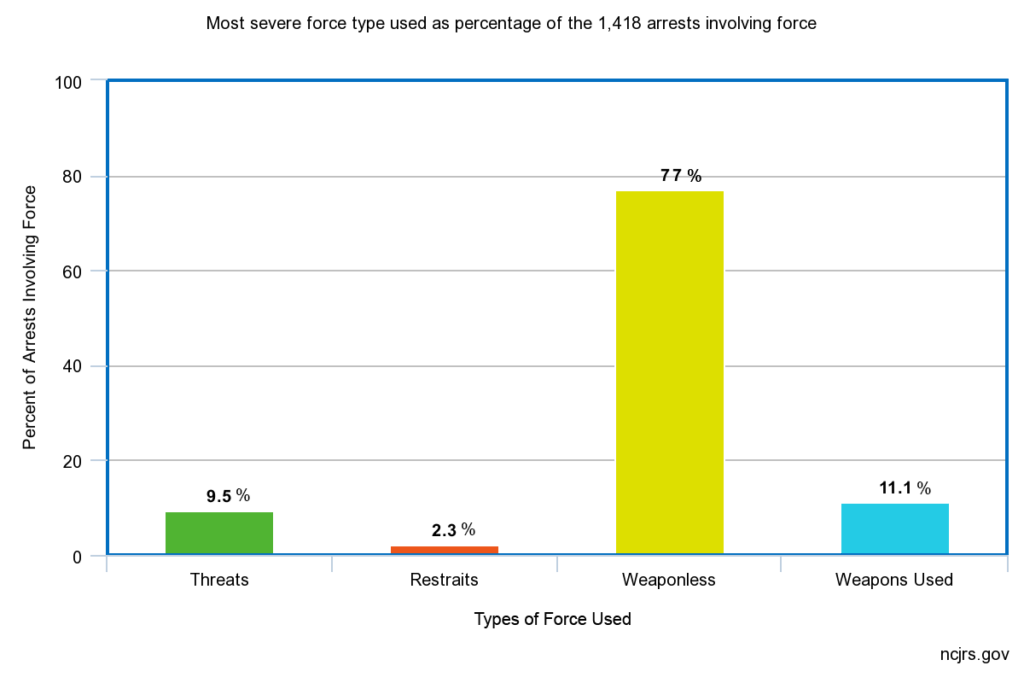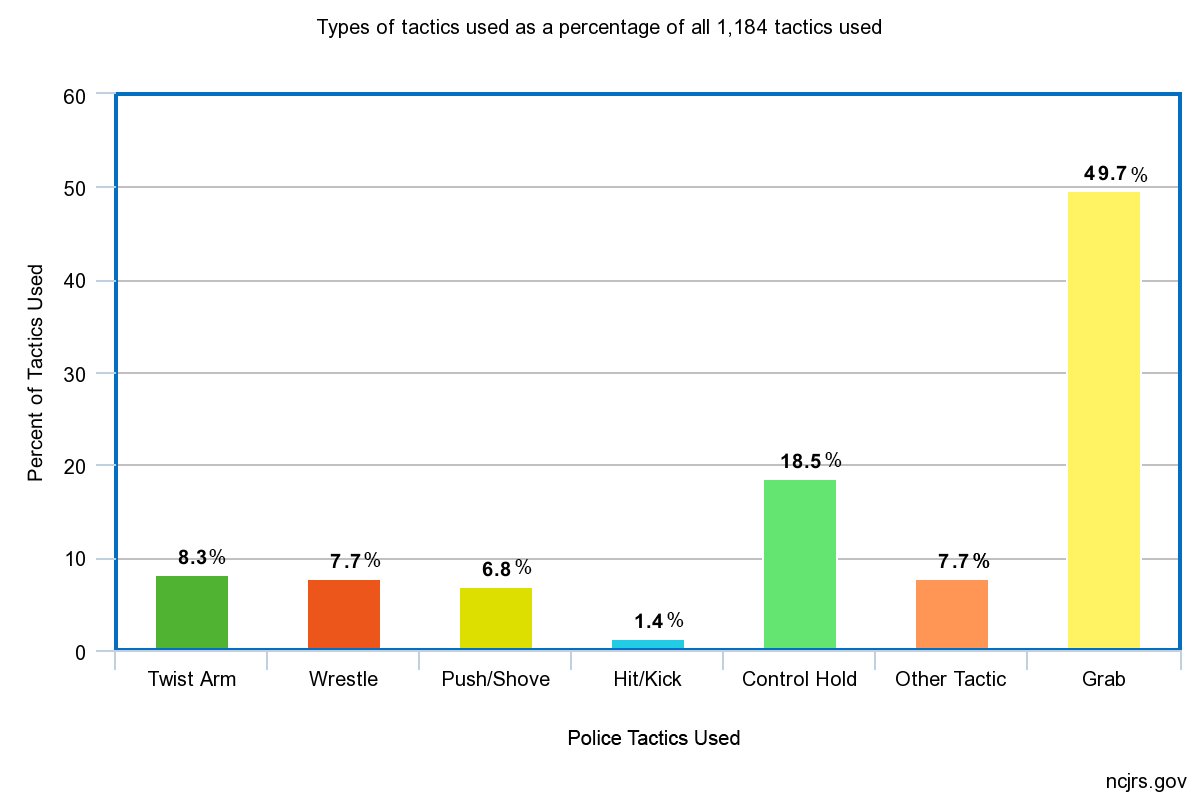A police chokehold lawyer can help if you or someone you care about was harmed by this law enforcement restraint. These maneuvers can restrict a person’s ability to breathe and cause death. Lawsuits demand settlements for both injuries and resulting deaths.
Following the death of Eric Garner in the United States on July 17, 2014, the serious risks of police chokeholds have become better known to Americans who have not been subject to police violence themselves. In the Eric Garner case, as you may know, an NYPD officer wrestled 43-year-old Eric Garner to the ground while he cried out the words, “I can’t breathe,” according to an article in The Guardian.
Similar to the protests that erupted in Summer 2020 following the killing of George Floyd in Minneapolis, Minnesota, the death of Eric Garner led to wide-scale protests against police violence, yet a grand jury refused to indict the officer who killed Garner. Garner’s words of “I can’t breathe” resonated for witnesses to the George Floyd killing, as Floyd gasped the same words while a police officer knelt on his neck for a total of 8 minutes and 46 seconds.
- What are Police Chokeholds?
- How Have Law Enforcement Officers Used Chokeholds?
- Efforts to Ban Police Chokeholds
- Chokeholds can Result in Positional Asphyxia
- Theories of Liability in a Police Chokehold Lawsuit
- U.S. Chokehold Cases Settled or Tried to Verdict
- Lansing Police Sued over Wrongful Death of Anthony Hulon
Among other serious and fatal injuries, police chokeholds can result in positional asphyxia, which can be fatal. It is critical for anyone who has been subject to a police chokehold and suffered injuries, or their surviving family members, to know that there may be options for filing a civil claim.
Even if criminal charges are not filed against the responsible police officer, or even if the responsible police officer is not convicted of a crime, you may be able to hold that officer or the government office that employed him or her accountable through a civil lawsuit.
In the meantime, it is important to learn more about chokeholds, recent efforts to ban them in U.S. police departments, and paths toward accountability.
The charts below show that the predominant types of force used by police officers do not involve firearms or other weapons but some form of direct physical contact. In almost 80 percent of all incidents involving physical force or threats of force. These findings confirm that most adult custody arrests do not involve force.
What are Police Chokeholds?
What is a chokehold, and how does it result in serious and fatal injuries when people are restrained by law enforcement officers?
According to the Merriam-Webster dictionary, a chokehold has two primary meanings. The word can refer to “a hold that involves strong choking pressure applies to the neck of another,” or it can be used to describe “absolute dominance or control.”
In many recent police chokehold cases in which alleged perpetrators have been detained by police officers and seriously injured or killed by chokeholds, both definitions apply. Yet the primary definition of a chokehold is the former — a restraint technique that involves applying pressure to a person’s neck.
When it comes to tactics used by police departments, there are two general types of chokeholds, according to an article in The Denver Post: respiratory chokeholds and carotid chokeholds.
What is the difference between these types of chokeholds?
A respiratory chokehold, according to that article, is one in which “the attacker uses their arm across the front of another person’s neck, blocking their airways and making it so they cannot breathe.”
Differently, a carotid chokehold is one on which “the attacker is using their arm around the neck and placing pressure on the sides of the neck to slow the blood flowing through two large arteries there in an attempt to render the person unconscious.”
How Have Law Enforcement Officers Used Chokeholds?
An article in Police Mag provides similar details but describes the two primary types of chokeholds a bit differently. According to that article, police officers are trained to understand the difference between an “air choke” and a “blood choke.”
An air choke, according to the article, “is performed when an officer’s forearm places pressure on the front of an assailant’s neck/throat area, and it is also known as the tracheal choke, true choke, wind choke, and push choke.” That article explains that “the purpose of the choke is to restrict air to the arrestee, and as such, if the procedure is applied for a certain length of time, death can ensue.”
In addition, this type of chokehold can result in injury to a detained person’s trachea, larynx, and hyoid, and those injuries can also lead to their death.
The Police Mag article explains that a “blood choke” is something different, and it “involves the use of an officer’s arm to apply pressure to one or both sides of an assailant’s neck.” With this kind of chokehold, the “choke involves compressing the arteries and/or the jugular veins, which restrict blood blow and thus oxygen to the brain.”
A blood choke can also be known by the following names: rear-naked choke, vascular neck restraint, lateral vascular neck restraint, bilateral carotid compression, stranglehold, and/or sleeper hold. This type of chokehold, according to the article, is more appropriate to restrain “active resisters and aggressive assailants,” and can be applied by police officers “safely through proper training.”
Police officers are trained to use weaponless tactics, including chokeholds, to detain suspects, if the need exists. As you see in the chart below, in 94% of arrests, the suspect did not use a tactic to resist arrest.
Efforts to Ban Police Chokeholds Across the United States
Certain cities, counties, and municipalities across the United States have taken steps to ban chokeholds. According to an article from CNN, many of the recent efforts to ban chokeholds arose after the killing of George Floyd in Minneapolis, Minnesota. As that article underscores, the chokehold technique as a law enforcement restraint method “has been a subject of controversy for years, particularly following the death of Eric Garner in 2014 after a police officer was accused of choking him.”
As the article discusses, the following states have taken steps toward banning chokeholds or have banned them outright:
- In Arizona, the Phoenix Police Department has suspended the use of carotid chokeholds.
- In California, Governor Gavin Newsom recently “directed police departments . . . to stop training officers to use carotid holds.” Newsom emphasized that carotid holds, also described as blood chokeholds, can put a detained person at risk of death. Newsom issued the directive after the San Diego Police Department and the Sacramento Police Department already indicated that they would no longer use carotid holds. Following Newsom’s directive, the Los Angeles County Sheriff’s Department announced that it was placing “an immediate moratorium on the use of carotid restraints in situations that do not rise to the level of deadly force.” In addition to the recent directive and shifts in city-specific police departments, a law passed in California in 2019 allowed the use of chokeholds and other techniques that could result in death “only when necessary,” according to an article in MedPage Today.
- In Connecticut, Governor Ned Lamont issued an executive order that prohibits members of the Connecticut State Police from using any type of chokehold. In addition to banning chokeholds outright for Connecticut State Police, this executive order also required Connecticut’s Department of Emergency Services and Public Protection “to update a state police manual to require troopers top, when possible, de-escalate situations, provide a verbal warning, and exhaust ‘all other reasonable alternatives’ before resorting to deadly force.” Changes to the police manual will also address bystander behavior among law enforcement officials, requiring Connecticut State Police troopers “to intervene to stop and report another officer’s excessive force.”
- In Colorado, although no statewide ban on chokeholds exists, the Denver Police Department has banned chokeholds “with no exceptions.”
- In Florida, the Broward County Sheriff’s Office recently announced that it would ban chokeholds unless deadly force is justified given the circumstances. Police officers in Miami have already been banned from using chokeholds that prevent a detained person from breathing.
- In Illinois, there is no statewide limitation of or prohibition against the use of chokeholds, but the city of Chicago has a new directive when it comes to limiting chokeholds. Specifically, the Chicago Police Department issued a directive banning the use of “carotid artery restraints,” or blood chokeholds, and “any other maneuvers for applying direct pressure on a windpipe or airway” unless there is justification for the use of deadly force.
- In Minnesota, a Hennepin County judge ordered the Minneapolis Police Department to cease the use of chokeholds. In addition, the order comes with a bystander or intervention requirement for other police officers, requiring officers to “immediately notify a supervisor if they see inappropriate use of force.”
- In New York, legislators recently passed a new law prohibiting the use of chokeholds by police and criminalizing the use of this technique. This law is named for Eric Garner as the Eric Garner Anti-Chokehold Act. To be clear, in addition to prohibiting the use of chokeholds, this law also comes with criminal consequences for police officers who employ chokeholds. Indeed, the law allows for police officers using chokeholds to be sentenced to up to 15 years in prison if the use of the chokehold “causes serious physical injury or death.”
- In Texas, there is no statewide limitation of or prohibition against the use of chokeholds, but the city of Austin is considering policy changes to limit or prohibit the use of chokeholds within the city. In Houston, Mayor Sylvester Turner signed an executive order to ban chokeholds in addition to making other reforms to the police force and intervention.
- In Washington, D.C., legislation recently banned the use of all chokeholds.
- In Washington State, efforts are underway to restrict chokeholds, but Governor Jay Inslee has stopped short of banning or prohibiting this technique altogether. However, in Seattle, chokeholds are banned. The Seattle City Council recently voted to prohibit any use of chokeholds by the Seattle Police Department.
It is possible that other cities, specific police departments, or states will take action in the future to ban the use of chokeholds or to limit their use. There are a variety of ways that chokeholds can be limited or banned, as you can see from the various laws in different U.S. states.
Depending upon the specific state where a chokehold injury or death occurs, it may be possible to file a negligence claim or a wrongful death claim against a specific police officer or a city or police department if a police officer violated state law, city law, or department policy by using a chokehold.
Chokeholds can Result in Positional Asphyxia
Chokeholds can result in a condition known as positional asphyxia. It is important to be clear, upfront, that chokeholds and positional asphyxia are not the same thing, although both terms have been used in recent news articles discussing the use of deadly force by police and killings of detained subjects by police officers.
Positional asphyxia is a term that refers to a particular kind of condition that can—but need not—result from a chokehold. The U.S. Department of Justice defines positional asphyxia as “death as a result of a body position that interferes with one’s ability to breathe.”
To be clear, chokeholds can result in positional asphyxia, but other dangerous police techniques can also result in positional asphyxia. In addition, positional asphyxia is just one type of condition that can result from a chokehold. In addition to positional asphyxia, chokeholds can result in many other types of serious injuries that can lead to a person’s death.
Theories of Liability in a Police Chokehold Lawsuit
If you or someone you love was placed in a chokehold by police and suffered harm, there are a number of liability theories that could be applicable to your case. It will be critical to have an experienced civil rights and excessive force lawyer assess the facts of your case to determine which of the available theories of liability could be applicable to your situation.
At the same time, it is important to understand the potential theories of liability in these types of cases. Those theories may include the following:
- Theory of negligence: You may be able to argue that the officer and/or the city or county employing the officer was negligent by filing a personal injury case or wrongful death claim after a nonfatal or fatal chokehold incident.
- Violation of the Fourth Amendment: Under the U.S. Supreme Court case Tennessee v. Garner (1985), the Fourth Amendment of the U.S. Constitution only permits a police officer to use deadly force (which may include the use of a chokehold) if deadly force is being used “to prevent the escape of a fleeing suspect” and “only if the officer has a good-faith belief that the suspect poses a significant threat of death or serious physical injury to the officer or others.” In addition, the Fourth Amendment requires police action to be reasonable under the U.S. Supreme Court case Graham v. Connor (1989).
- Civil Rights Act of 1871 violation: A person or their family may be able to argue that police use of excessive force violates this federal law, but excessive force claims are more commonly filed as violations of the Fourth Amendment, as discussed above.
- Substantive due process violation under the Fourteenth Amendment: This route is not commonly used any longer to bring excessive force cases, but it has been used in the past.
Who Can Sue the Police in a Wrongful Death Lawsuit?
In most states, the surviving family members of the victim file the lawsuit. A personal representative, most often a family member, will be appointed to bring the case.
The personal representative will be the “front” person for the case, but all family members entitled to receive a settlement share will be represented. When the case settles, the judge will determine which family members receive settlement funds and the amount of each person’s share.
A person who feels they were slighted in the proposed amount can file an objection and ask the judge for a greater share of the settlement payout.
U.S. Chokehold Cases Settled or Tried to Verdict
There are many chokehold cases across the U.S. that have been filed, and either settled or tried to verdict. The following are examples of some of those cases, which underscore the ways in which police can be held accountable for chokeholds and excessive force:
- According to an article from the Associated Press (AP), Eric Garner’s family accepted a $5.9 million settlement with New York City following Garner’s chokehold death. In July 2015, Garner’s family reached this settlement with New York City after filing a $75 million lawsuit. As a reminder, Garner was killed by an NYPD officer who used a chokehold on Garner despite Garner’s cries that he could not breathe. Garner, who we have discussed previously, was stopped by the NYPD near a convenience store on Staten Island “because police officers believed he was selling loose, untaxed cigarettes,” according to the article. The New York City medical examiner ultimately determined that the chokehold “contributed to Garner’s death,” and the family filed a lawsuit against the city even though a grand jury did not indict the officer who killed Garner.
- The Las Vegas Metropolitan Police Department settled a chokehold lawsuit for $2.2 million in July 2020, according to an article in the Las Vegas Review-Journal. The lawsuit arose out of a chokehold death that occurred in 2017 when Tashii Brown was killed by police. The lawsuit was filed on behalf of Brown’s family in 2017, and it alleged that the Las Vegas Metropolitan Police Department had used unlawful excessive force and was grossly negligent for the death. In the case, a former police officer used a taser to stun Brown “seven times,” and then “repeatedly punched him and placed him in what [the police officer] described as a rear naked choke for more than a minute.” This type of chokehold restricts a person’s blood flow to the brain. The Clark County coroner’s office determined that Brown “died by asphyxia due to police restraint procedures.”
- In Southern California in 2018, San Diego County agreed to a $137,000 settlement following a chokehold lawsuit against a now-retired deputy, according to an article in the San Diego Union-Tribune. While chokeholds certainly can result in death, they can also lead to nonfatal injuries as in this particular case. The settlement arose out of a lawsuit filed by Robert Branch III in 2015, who alleged that the deputy “used a chokehold to knock him briefly unconscious and detain him after a road-rage incident between them,” according to the article. Branch argued that he “feared for his safety” when the deputy approached him, which led to his decision to film the encounter. In the video, the deputy can be seen using “a good old-fashioned arm-bar chokehold” on Branch, who was employed as a security guard at the time of the chokehold incident.
- In Washington State in April 2020, a jury awarded a chokehold victim $640,000 in an excessive force lawsuit, according to an article in the Federal Way Mirror. As that article explains, the victim, Josiah Hunter, filed a lawsuit against the city of Federal Way, WA following an arrest that occurred in 2014. Prior to the arrest, Hunter approached the scene of a head-on DUI collision with the aim of checking on the vehicle occupants. A Federal Way officer appeared on the scene and asked Hunter and another young man to “step away” from the scene, according to the article. The officer indicated that Hunter did not step away, and the officer placed him in a chokehold. The $640,000 verdict initially was higher given that the jury awarded more to the plaintiff in punitive damages than is permissible under Washington State law. The total verdict ultimately included $360,000 in punitive damages, which was “down from $600,000” initially awarded in punitive damages. Unlike compensatory damages, punitive damages are awarded much less frequently and are designed to punish a wrongdoer for particular harmful or egregious behavior.
- In November 2019, a federal jury awarded $13.2 million to a chokehold victim’s family in Anaheim, California, according to an ABC News report. In that case, Anaheim police responded to a call concerning a “suspicious person” who matched the description of the chokehold victim, Vincent Valenzuela. The Anaheim police approached Valenzuela at a laundromat, and one of the Anaheim police officers placed Valenzuela in a chokehold. Valenzuela died shortly thereafter, according to the lawsuit. While the Orange County District Attorney’s Office determined that the officer’s actions were justified, the jury disagreed.
As an article in The Wall Street Journal underscores, the payouts in police misconduct cases have risen significantly in recent years, with many families and victims receiving multi-million dollar settlements in chokehold claims and other similar excessive force cases.
Indeed, in 2015, the 10 largest U.S. cities paid out nearly $250 million in settlements and court judgments in police misconduct cases. That settlement figure represents an increase of nearly 50% from just five years prior in 2010. In recent years, settlements and verdicts have continued to rise.
Lansing Police Sued over Wrongful Death of Anthony Hulon
Buckfire Law filed a wrongful death lawsuit on behalf of the family of Anthony Hulon in Lansing in October 2020.
Hulon died on April 11, 2020, after being handcuffed and pinned facedown to the ground for five minutes and 23 seconds by four officers.
Before he died, Hulon repeatedly said “I can’t breathe,” and told the officers he was “passing out.” The medical examiner ruled his death a homicide from positional asphyxia. The four officers involved are back at work.
The investigation remains pending at the Michigan Attorney General’s office.
Contact a Police Chokehold Lawyer Today
If your civil rights were violated, or if you suffered an injury or lost a loved one due to excessive force or negligence committed by a member of law enforcement, it is critical to learn more about your options for seeking financial compensation.
Do not hesitate to get in touch with one of the experienced police chokehold injury attorneys at our firm.
We want to ensure that law enforcement officers are held accountable when they use harmful tactics, including chokeholds that result in positional asphyxia. As we have made clear, chokeholds can result in life-long injuries, and they can be deadly.
Contact the Buckfire Law Firm today to discuss your options for filing a claim with an advocate at our firm.
(Main)
- 29000 Inkster Road
Suite 150
Southfield, MI 48034
- Phone: (248) 595-7544
- 19 Clifford St.
Suite 805 Merchants Row
Detroit, MI 48226
- Phone: (313) 992-8281
(Woodward Address)
- 1001 Woodward Ave.
Suite 505
Detroit, MI 48226
- Phone: (313) 777-8482
- 343 S. Main Street
#206
Ann Arbor, MI 48104
- Phone: (734) 888-3003
- 51424 Van Dyke Ave
#3
Shelby Township, MI 48316
- Phone: (586) 250-2626
- 432 N. Saginaw Street
Suite 413
Flint, MI 48502
- Phone: (810) 818-8182










